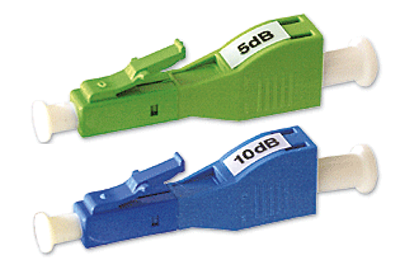attenuator
- Attenuators are passive or active bipoles, for example a resistor, an inductor or capacitor, or a voltage divider, which are used to reduce the signal level. They can have a fixed attenuation value or be variable, and they can also be frequency-dependent and -independent, wavelength-dependent and -independent.
- Inhigh-frequency technology, the impedance matching of the attenuators is important because impedance deviations from the impedance of the transmission medium have a direct influence on the transmission behavior. For this reason, RF attenuators are designed so that their input impedance and output impedance correspond to the characteristic impedance of the line. For such attenuators, there are circuits of ohmic resistors, which are called T-member, Pi-member, L-member, H-member, O-member or C-member according to their physical circuit configuration. element While the T element has two resistors in series with the line and one in parallel, the Pi element has two resistors in parallel and one in series with the line. The L-element, on the other hand, consists of two resistors connected in an L-shape.
- In optical transmission systems, optical attenuators are used to reduce optical power and match fiber attenuation to system dynamics. Opticalattenuators are available with fixed attenuation values between 1 dB and 30 dB and as attenuators that can be adjusted continuously or in steps.
- In audio technology, attenuators are broadband transformers that attenuate the audio level by a certain dB value and thus ensure that the audio signal is matched to the inputs of mixing devices or other audio components.


